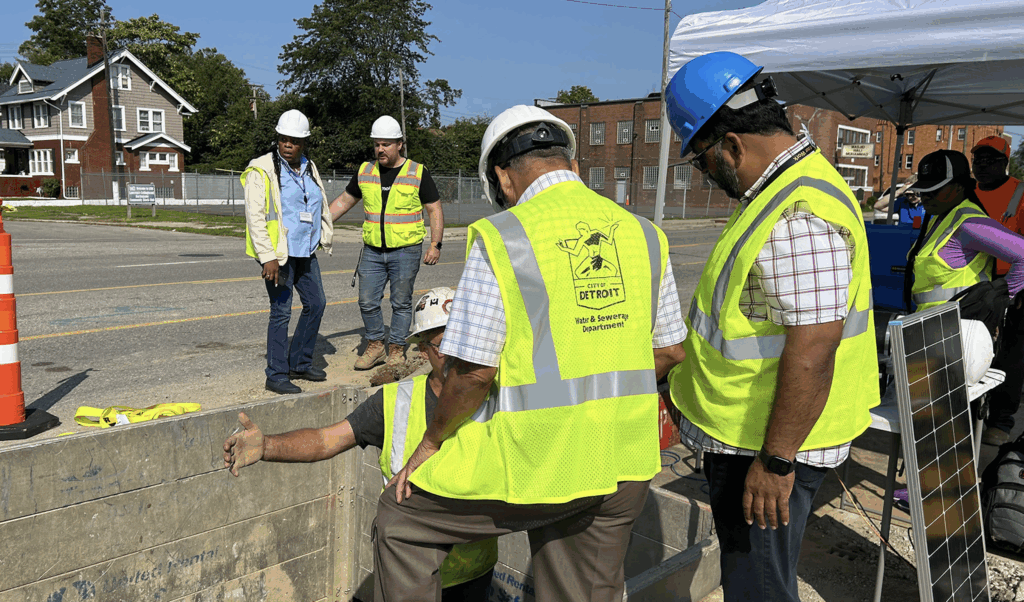Michigan-Founded Tech Company, Motmot

Aging drinking water systems are one of Southeast Michigan’s most pressing infrastructure challenges. Many pipes in the region date back to World War II, built with materials now at the end of their service life. Combined with harsh freeze-thaw cycles and decades of underinvestment, the result is frequent leaks, water main breaks, and costly emergency repairs. Motmot, a startup located in Detroit, is tackling this challenge by deploying robotic technology directly inside live water mains. By providing utilities with condition data they’ve never had before, Motmot aims to shift water infrastructure management from reactive crisis response to proactive planning. SBN Detroit interviewed Elliot Smith, the company’s CEO and Co-Founder, about Southeast Michigan’s unique vulnerabilities, the role of technology in creating more equitable water systems, and how utilities can prepare for the future of smart infrastructure. Q: From your perspective, what makes Southeast Michigan’s drinking water systems especially vulnerable? A: Southeast Michigan has some of the oldest drinking water systems in the country. Much of the pipe was placed around World War II, often using cast iron that is now at the end of its life. Add in our freeze-thaw cycles, which cause pipes to expand and contract, and the risk increases. We also have a history of underinvestment — the goal has long been to replace about 1% of the system per year, but that hasn’t happened consistently. In the Detroit metropolitan area alone, there are 13,000 to 14,000 miles of water main pipe. When one failure occurs, it can cascade into emergency work for other cities connected to the same transmission systems. Q: How does your technology change the timeline for cities and utilities — shifting from reactive maintenance to proactive decision-making? A: Traditionally, utilities only learn about problems once a water main fails. That means flooding, emergency repairs, added operational expenses, and public safety risks. What we’re fighting against is that cycle. Our technology provides data before mains fail. It’s about making the unknowns known and helping cities get ahead of the problem. Q: How do you see technology helping ensure that water system improvements are not only efficient but also equitable? A: Equity starts with visibility. Communities with fewer resources often can’t afford inspections, which means they experience more frequent issues. If we can lower the barrier to entry and make inspections affordable, every community has the chance to see what’s happening in their system. That helps mitigate risk and plan for future projects. At the same time, state revolving funds and stronger datasets can help overburdened communities secure the resources they need. Q: Where is Motmot in development today? A: We’re in the pilot stage now. We’ve kicked off our first pilot with the city of Detroit – I was especially happy that Detroit was the first city to take a chance on us. We are working through the American Water Works Association network. We already have more than 50 communities on our waiting list. That said, we’re being very intentional about not moving too fast. We want safe, effective pilots for every community we work with. My goal is to have 10 pilots started by the end of the year. Q: Beyond financial costs, what are the biggest environmental consequences of undetected water loss? A: Water loss is significant. A leak means residents are paying for water they never actually use. But it’s not just lost water — it’s wasted energy and chemicals as well. That water was treated, pumped, and disinfected before it ever leaked into the ground. In Michigan, reducing water loss directly supports our sustainability goals by conserving Great Lakes water and reducing the energy tied to treatment and pumping. Q: What do you see as the biggest hurdles to widespread adoption of smart water infrastructure? A: Risk perception is one. This is a relatively new technology, and water systems are old and often archaic. The mentality of “if it’s not broke, don’t fix it” is strong — but the truth is, much of the system is broken. We also have to prove our technology won’t contaminate systems or interfere with daily operations. And public works departments are already stretched thin. They’re chasing main breaks and doing emergency repairs, so adding another piece of technology can feel like a burden at first glance. Q: Motmot is entering a highly regulated, risk-averse sector with a disruptive idea. What lessons can other businesses learn from your approach? A: It really comes down to partnerships and credibility. We started incubating at the university level, then built credibility through the American Water Works Association. You have to build trust in the ecosystem — with regulators, utilities, and stakeholders. If you have a big idea, you can’t just drop it into the market. Plant seeds, engage stakeholders, and earn advocates who will vouch for you. Q: What do you see as the next frontier in smart water infrastructure — and how might Michigan businesses and communities prepare? A: Integration. In industries like oil and gas, systems like inspections, billing, and modeling are linked because there’s money to be made in efficiency. In the municipal space, those systems are often siloed. Breaking those silos down — connecting engineering departments, utilities, and technology platforms — is the next frontier. Michigan is well positioned to lead in this. We have a concentration of utilities, strong players like the Great Lakes Water Authority, and research universities investing heavily in this space. If we can integrate and apply technology in practical ways, not just in pilot projects, we can move from innovation theater to real-world results. Q: When you talk with water leaders across the U.S., what pain points come up most often? A: There are three that come up repeatedly. First, aging infrastructure — in some places, water mains date back to the 1840s. Second, visibility. Public works is an underappreciated industry. People see parades and fireworks, but not the crews that make daily life possible. That lack of visibility has led to chronic underinvestment. Third, affordability. This space has


